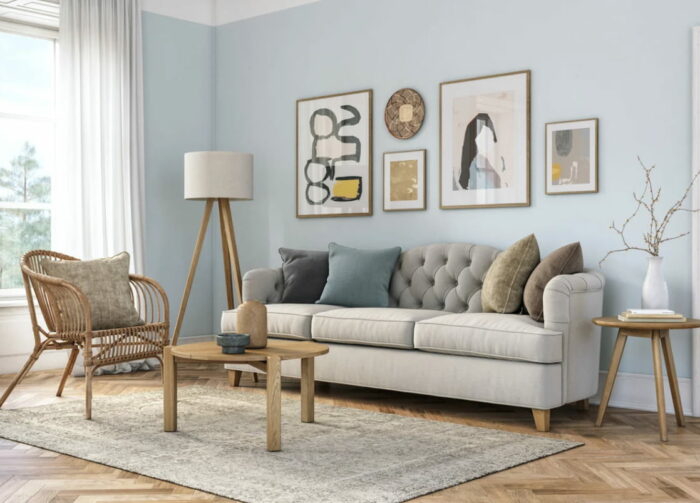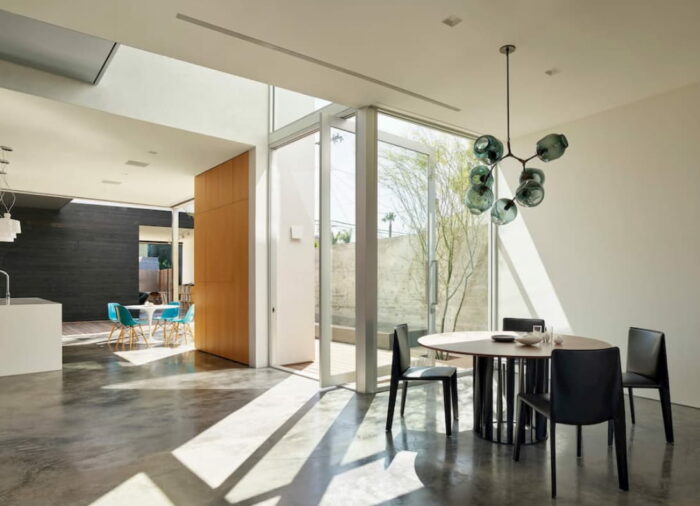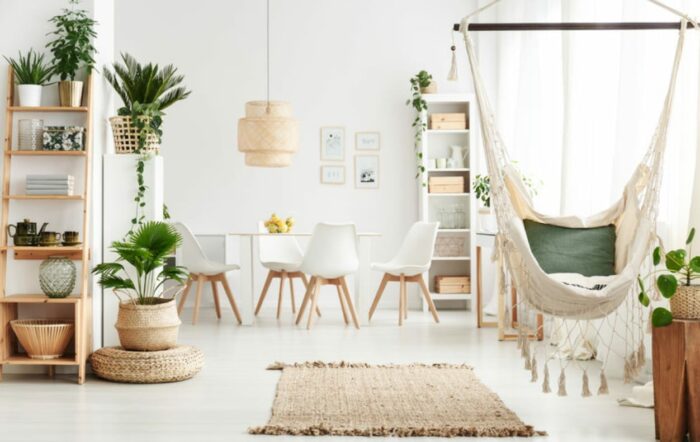Transforming your home into a relaxing haven is more than just a design preference—it’s an investment in your well-being.
In bustling cities like Orlando, known for its exhilarating theme parks and dynamic entertainment scene, having a peaceful home to return to can be the perfect counterbalance to the outside world’s excitement. Think of your home as your personal retreat, a space where you can unwind and recharge.
Whether you live in a bustling city center or a suburb, creating a serene home environment is key to maintaining balance.
In this article, we’ll walk through renovation tips that will help you turn your home into a sanctuary of tranquility. From soothing color palettes to comfortable living spaces, these tips are designed to help you create a peaceful, calming, and refreshing living environment.
1. Choose Calming Colors

Color has a profound impact on our mood and energy. To create a relaxing atmosphere, opt for a calming color palette. Soft, neutral tones like light blues, greens, and grays are known for their soothing properties.
These hues evoke a sense of tranquility and can make your space feel more serene. Consider these colors for walls, furnishings, and even accessories.
If you’re unsure about a full paint job, try adding these colors in smaller elements like throw pillows, curtains, or artwork to gently incorporate tranquility into your space.
2. Design a Relaxing Bathroom Retreat
Your bathroom can be more than just a functional space; it can be a spa-like retreat. Consider a bathroom renovation that focuses on relaxation.
If you live in the city, an Orlando Bathroom Remodeling Company, such as Quality Craftsmen, can help you design a space that feels like an oasis, with features like a deep soaking tub, a rainfall showerhead, or soothing lighting.
Use serene colors and textures to enhance the spa-like feel. A well-designed bathroom can provide a private sanctuary within your home where you can relax and rejuvenate.
3. Embrace Natural Light

Natural light can instantly make a space feel more open, airy, and peaceful. If possible, increase the amount of natural light in your home. Consider larger windows or skylights, especially in areas where you spend most of your time.
If structural changes aren’t feasible, strategically placed mirrors can help reflect light around a room. Sheer curtains or translucent window treatments allow for privacy while still letting in plenty of natural light. Remember, a sunlit room can lift your mood and create a more positive, calming environment.
4. Create a Comfortable Living Space
Comfort is key to relaxation. Invest in comfortable, high-quality furniture that invites you to unwind. A cozy couch, a plush armchair, or a soft rug can make a significant difference in how inviting a space feels.
Remember, comfort doesn’t mean sacrificing style; you can find pieces that are both aesthetically pleasing and conducive to relaxation. Arrange your furniture to encourage easy conversation and a sense of intimacy, making your living space a welcoming hub for relaxation and togetherness.
5. Incorporate Plants and Greenery

Bringing a bit of nature indoors can have a calming effect on your home environment. Indoor plants not only enhance the aesthetic of your space but also improve air quality and reduce stress.
Choose low-maintenance plants that thrive indoors, like snake plants, peace lilies, or philodendrons. Even a few small plants can add a peaceful, natural element to your home. If you don’t have a green thumb, high-quality artificial plants can have a similar visual impact without the need for maintenance.
6. Create a Dedicated Relaxation Space
Having a dedicated space for relaxation can significantly enhance your home’s tranquility. It could be a reading nook, a meditation corner, or a hobby area.
Furnish this space with items that promote relaxation, such as comfortable seating, soft lighting, and calming decor. This designated area serves as a physical reminder to take time for yourself and engage in activities that soothe your mind and body.
7. Minimize Clutter

Clutter can significantly disrupt the tranquility of your home. A clutter-free environment not only enhances the aesthetic of your space but also promotes a sense of mental clarity and calm. Start by decluttering and organizing each room.
Be mindful of what you keep in your living spaces – every item should have a purpose or bring you joy. Use smart storage solutions like built-in cabinets or multi-functional furniture to keep everyday items out of sight but within easy reach.
Regularly reassess and declutter to avoid accumulation. Remember, simplifying your surroundings can lead to a more relaxed mindset.
This approach to minimizing clutter isn’t about creating a stark or impersonal space but rather about curating an environment that feels orderly and serene. It’s about striking the right balance between what you need and what brings you peace, resulting in a home that’s both functional and calming.
8. Opt for Soft, Warm Lighting
Lighting plays a pivotal role in creating a relaxing atmosphere in your home. Harsh, bright lights can be overstimulating, while soft, warm lighting can evoke a sense of comfort and relaxation.
Consider installing dimmer switches to adjust lighting intensity according to the time of day or your mood. Layer your lighting with a mix of overhead, task, and accent lights for flexibility and ambiance. Table lamps, floor lamps, and wall sconces can add a soft glow to your rooms, enhancing the cozy feel.
When selecting light bulbs, opt for warmer tones rather than cool, blue-tinted lights. Warm lighting is particularly beneficial in bedrooms and living areas where relaxation is key.
You can also incorporate candles or string lights for a soothing effect during the evenings. Good lighting design isn’t just functional; it can transform the atmosphere of your home, making it a more comforting and inviting space.
9. Bonus tip: Home Functionality Improvements
As you go about your journey to create a more relaxing home environment, a creative angle to consider is functional enhancements around your home. An often overlooked area is key management. Misplaced or lost keys can easily disrupt your peace and relaxation.
To mitigate such stressful situations, consider a practical solution: having your tool at home designed to make key duplicates. By doing this, you’ll always have backup keys at your disposal. It saves you trips to local key cutters and provides a sense of self-sufficiency.
Over time, this seemingly small improvement can contribute significantly to maintaining a stress-free and relaxing home ambiance.
Conclusion
Transforming your home into a relaxing sanctuary is about creating a space that reflects tranquility, comfort, and peace. Each of these tips is a step towards building an environment that not only looks calming but also feels restorative.
Remember, a relaxing home is a personal retreat that caters to your unique sense of peace and comfort. With thoughtful renovations and mindful decorating, you can turn your living space into a serene haven, perfect for unwinding and recharging.
 Jessica Paster The Future is Green
Jessica Paster The Future is Green